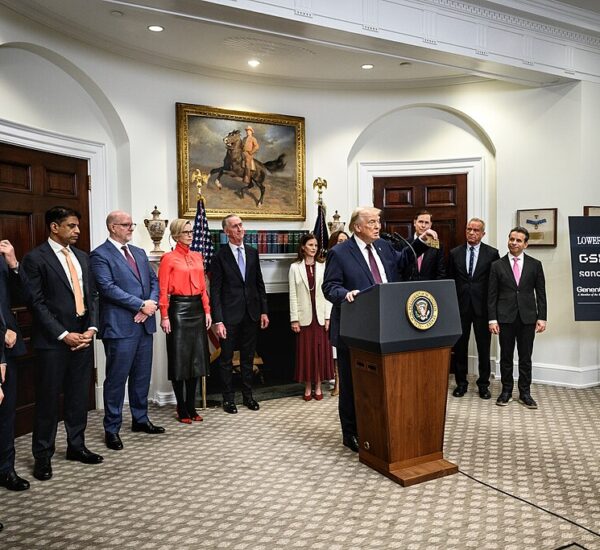Senate Makes Major Move
WASHINGTON, D.C. — The Senate Appropriations Committee just cleared the way for over $1 trillion in government funding for fiscal year 2026, pushing forward key elements of President Donald Trump’s America First agenda and setting the stage for a potential September spending showdown.
The legislation, advanced Thursday, includes $852 billion in defense spending and roughly $200 billion for health, labor, and education programs, as lawmakers scramble to fund the government before the October 1 deadline.
🔹 Massive Boost for U.S. Military and National Security
The lion’s share of the funding goes to strengthening the U.S. military — a core priority under President Trump. The new defense budget is a 3% increase over Trump’s original request and follows a separate $150 billion military funding boost passed earlier this month as part of Trump’s tax and economic growth package.
Key highlights from the 2026 defense bill include:
- 3.8% pay raise for all military personnel
- 10% raise for junior enlisted troops
- $171 billion for weapons procurement
- $140+ billion for defense research and development
- $303 billion for military operations, training, and readiness
The bill also ramps up funding for:
- Missile defense systems
- Drone and anti-drone technology
- U.S. shipbuilding and submarines, including $1.9 billion for Virginia-class subs
- $500 million for Israel’s Iron Dome and allied security
- $800 million for Ukraine—despite Trump’s budget leaving it at zero
Sen. Mitch McConnell (R-KY), who helped craft the bill, emphasized the importance of sustained investment in America’s defense:
“We’re not going to rebuild American strength with shortcuts or gimmicks. This is about real readiness.”
🔹 Conservative Victories: Cutting Left-Wing Media and Reining in Bureaucracy
In a major win for conservatives, the bill completely strips funding from the Corporation for Public Broadcasting (CPB), defunding taxpayer support for left-leaning outlets like NPR and PBS. Over $1 billion in previous CPB funds were clawed back by Republicans this month.
Sen. Patty Murray (D-WA) admitted the impact would be severe for liberal media, warning over 1,500 public stations could lose funding.
But Republicans stand firm. Many Americans are tired of subsidizing media that doesn’t reflect their values, especially in rural and conservative communities.
🔹 Domestic Spending: A Mixed Bag for Health and Education
The Labor-HHS-Education portion of the bill includes:
- $50 billion for biomedical research at NIH, with major boosts for Alzheimer’s and cancer studies
- $12 billion for Head Start
- $8.8 billion for Child Care Block Grants
- $5.5 billion for mental health services
- $3+ billion for opioid addiction response and recovery programs
Sen. Shelley Moore Capito (R-WV) praised the package for focusing on rural healthcare, mental health, and protecting families—a clear nod to the needs of red-state America.
Meanwhile, Democrats like Tammy Baldwin (D-WI) attacked the Trump administration for pushing to downsize SAMHSA, the agency behind the 988 suicide hotline and addiction services. But Republicans have called for streamlining bloated federal health agencies to reduce waste and redundancy.
🔹 What’s Next? Clock Ticking as Recess Approaches
As Congress prepares for its August recess, time is running short. The House has passed just two spending bills, while the Senate has passed none on the floor so far.
Senate Appropriations Chair Susan Collins (R-ME) said the committee plans to push through the remaining funding packages quickly:
“We’re committed to moving these bills forward—on the floor and in committee.”
The momentum reflects the influence of President Trump’s strong fiscal leadership, as his “one big, beautiful bill” continues reshaping Washington’s priorities — less spending on globalist pet projects, more investment in America’s strength and sovereignty.






https://shorturl.fm/hstok
https://shorturl.fm/nVclP
https://shorturl.fm/wkQEu
https://shorturl.fm/WJXhP
https://shorturl.fm/r4zeB
https://shorturl.fm/QTuQt